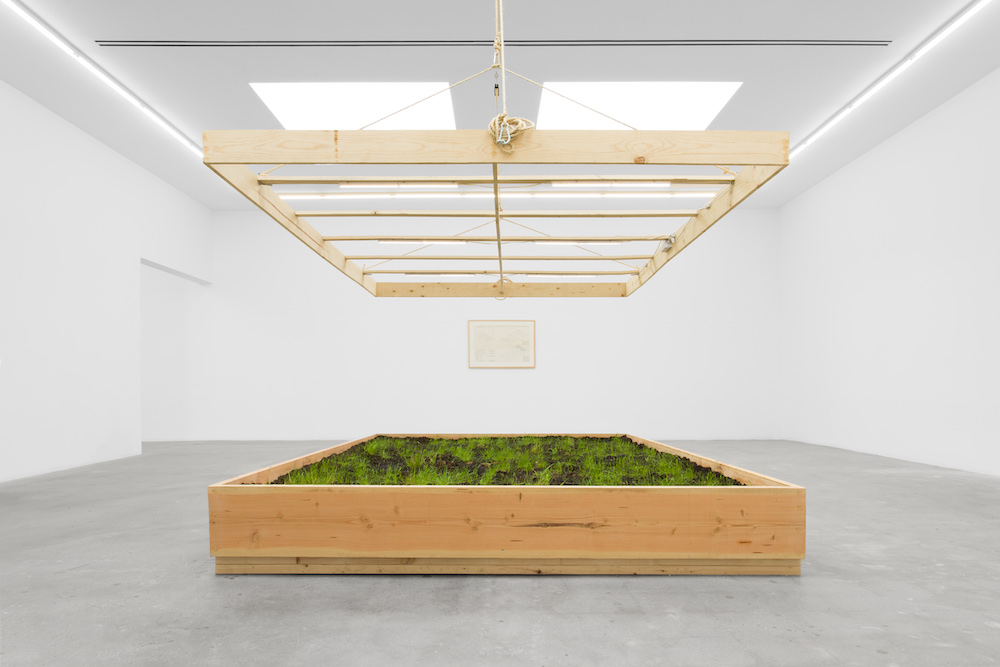Organized in concert with the Getty’s PST ART initiative, this re-mounting of Survival Piece #1: Air, Earth, Water Interface or Annual Hog Pasture Mix (1970–71) — in keeping with the entirety of the Harrison collective’s output — is less about a “collision” (per PST’s subtitle “Art and Science Collide”) than the convergence of the two. The Harrison Studio, a collaborative team that encompassed Newton (1932–2022) and Helen Mayer (1927–2018) Harrison, and later including Gabriel Harrison and other artists, approached its subjects with an ethos that was — beyond their environmental character and scope — above all social.
Moving past a superb and beautifully complementary exhibition of work by another gallery artist, Sarah Ippolito, the viewer is confronted by the Hog Pasture in its raised redwood planting bed (or “growth box”), roughly eight feet across and extending twelve feet into the main gallery space — and by engaged viewers mingled around its perimeter. The dimensions approximate those of its original incarnation — at Boston’s Museum of Fine Arts in 1971 (a 2012 iteration at MOCA here in L.A. was slightly larger). Suspended approximately five feet directly above is a lighting truss studded with LED grow lights configured to the measurements of the planter.
The planter is filled with topsoil, compost and other planting media more or less comparable to previous iterations (also 5,000 European night crawler worms), from which various grasses—the product (as in the original) of R.H. Shumway Seedsman’s Annual Hog Pasture Mix—are already growing abundantly, albeit not to the density seen in prior installations. (The VSF team had far less than the many weeks of advanced growth prior museum iterations were afforded.) Still, it is something that a pig might conceivably pick at. And that was precisely the objective—not to sustain or nourish a pig necessarily (though at least one museum “pasture” installation did just that), but to get the human viewers looking and talking about it.
“All of a sudden, people are looking at the environment in one way or another, and they’re looking differently. In other words, it’s bringing their attention in a way that is meaningful.” The comment comes from Helen Harrison herself; a video loop taken from the closing of the MOCA 2012 Land Art exhibition runs on a monitor directly behind the viewers as they enter the gallery. This is exactly the sort of conversation the installation engendered. Setting to one side the dire condition of topsoils globally (consider the disastrous deterioration of the Amazon basin), through the “Survival Pieces” and indeed the entire body of their work, the Harrisons sought to press forward discussions among humans about the larger conversation of the human species with its natural and built environments and the global biosphere generally.
Press materials for the show reference Donald Judd and Dan Flavin as influences for the Harrisons’ design templates, but the more pertinent influence here is Robert Smithson. Unlike Smithson, the Harrisons’ focus was the environment; but as quintessential “non-sites,” “the Survival Pieces” (Hog Pasture through Full Farm) present closed-off arrays of “determinate uncertainty,” placing the ecological in a deeper dialogue with the cultural—with a view towards reconciliation, restoration, and sustainability.


